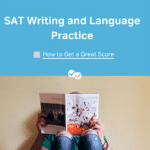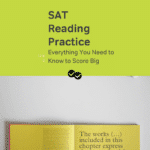The format on the New SAT is different from the old one in many ways, with changes across all sections. Perhaps some of the biggest changes are being made to SAT Writing. Today, we’re going to look at three key facts about the kinds of skills you’ll need to demonstrate in order to get a top score on New SAT Writing.
#1: The Basic SAT Skills being Tested have Not Changed
In the old format of the SAT, you had to correct errors in pieces of writing and revise writing to improve its style. You’ll still do the exact same thing in the New SAT. Admittedly, the kind of writing you’ll be correcting will be changing a bit. That brings us to number two on the list of true facts about New SAT Writing.
#2: All Pieces of SAT Writing are Whole Passages
Before the College Board unveiled the New SAT this month, the SAT exam only asked test-takers to correct short, isolated pieces of writing. On SAT exams before March 2016 students were presented with single sentences or individual paragraphs, no long passages. In contrast, text revision and correction on the New SAT takes place only in the context of longer passages. The passages are not quite as long as the ones in New SAT Reading (Four Ways in Which New Sat Reading is Different), but they are still substantial, about 400 to 500 words in length.
This means that the reading skills component of SAT Writing has changed. Scoring well in New SAT Writing requires longer, sustained reading comprehension. This sustained reading will need to be deep and critical. On the New SAT Writing Section, you must approach these longer passages with a keen eye for both errors and more subtle imperfections in style. Don’t just strive to understand the basic facts you’re presented with as you would in SAT Reading. Also, really think about what the writer is doing well and what the writer may be doing wrong.
As someone who has to read a lot of SAT practice materials, I find this change to be a definite improvement. The Writing Section is much more interesting and fun to read now that informative articles and conversational personal writings have replaced short standalone texts. New SAT Writing Passages are far more engaging than the previous disconnected sentences and paragraphs. If you’re more engaged in a piece of writing, you’ll understand it on a deeper level.
These new passages also have one other feature that makes them more complex and more interesting, pictures. This brings us to our third important fact about the skills you’ll need to do well on the new and improved SAT Writing Section.
#3: You’ll Need to Make Revisions Based on Infographics
Some of the informative reading passages in new SAT Writing include infographics, graphs, charts, tables, maps, diagrams, and so on. As the test-taker, you will be asked to suggest revisions that create a better match between text and visual. This means you need to build your skills in visual literacy, the ability to read infographics as you prepare for New SAT Writing.






Leave a Reply